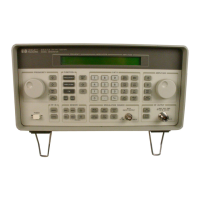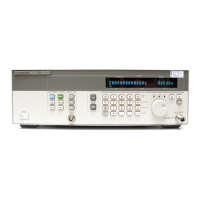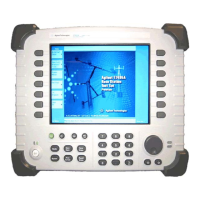1-38
Installing the 86100C
Electrical Connections
• To tighten, turn connector nut only
• Do not apply bending force to connection
• Do not over tighten preliminary connection
• Do not twist or screw in connectors
• Do not tighten past the "break" point of the torque wrench
Using Connector
Savers
Connector savers are useful in prolonging instrument life and ensuring better
quality measurements. Refer to the online help for a list of commonly used
connector savers.
3.5 mm and SMA
Connectors
Precision 3.5 mm microwave connectors are compatible with an SMA connec-
tor within its specification. Due to the variable quality of the SMA connector,
mating with an SMA can sometimes cause severe damage to the 3.5 mm con-
nector. To ensure measurement accuracy, use 3.5 mm precision connectors.
However, you can use SMA connectors if special care is taken when mating the
connectors, and all connectors are undamaged and clean. Before each use,
check the mechanical dimensions of all connectors with a connector gauge to
make sure that the center conductors are positioned correctly.
CAUTION A male SMA connector pin that is too long can smash or break the delicate fingers on the
precision 3.5 mm female connector.
CAUTION Some precision 3.5 mm female connector fingers are very tight and can pull the center pin of
their mates out past specifications when the connectors are disconnected. If such a male pin
is inserted into a female connector, it can cause considerable damage by pushing the female
center conductor back too far. Be aware of this possibility and check all connectors before
mating them again.
1.85 mm Connectors The 1.85 mm connectors are used with many of the Agilent 86100 series plug-
in modules and remote heads.
CAUTION Failure to follow the guidelines for proper connector handling and avoiding electrostatic
discharge (ESD) can result in severe damage to the product. In some cases, the 1.85 mm
connector is an integral part of the electrical sampler device. Therefore, by using improper
cleaning and handling techniques, you risk expensive instrument repairs.
• Observe the connection techniques listed in the 86100C help.
• Clean and inspect (visually and mechanically) all connectors.
• Align connectors carefully. Look for at physical contact at all points on the
mating plane surfaces.
• Make a gentle, preliminary connection. If initial alignment is correct the con-
nector nut should thread on to the female outer conductor with minimal fric-
tion.

